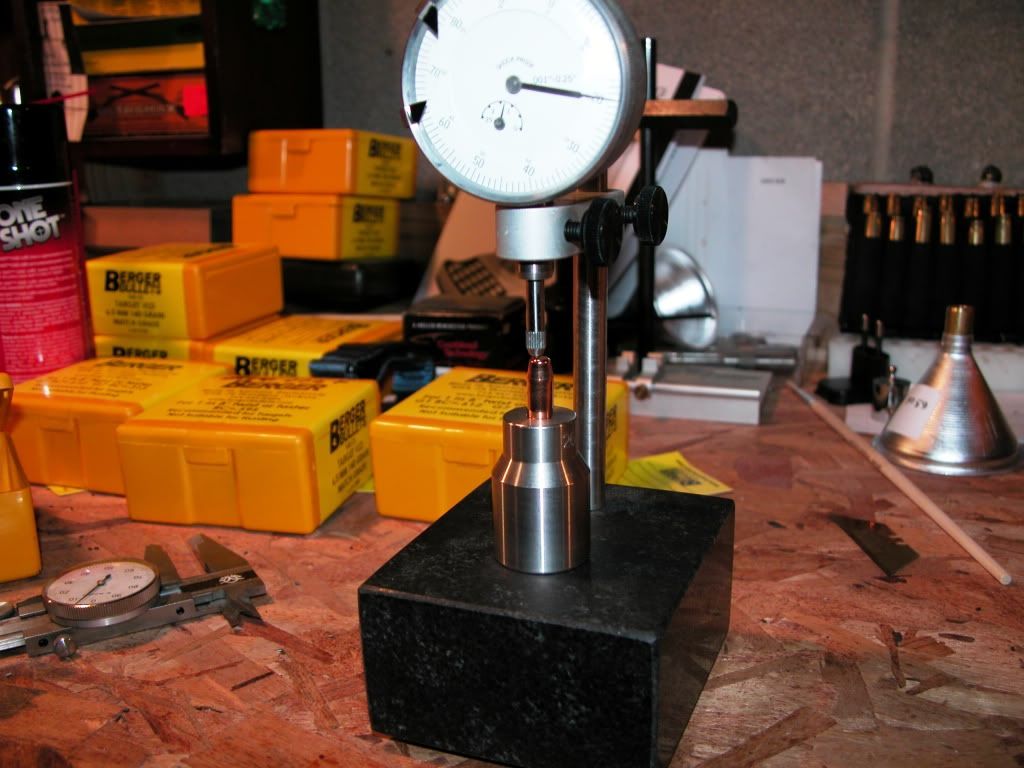Re: Hand Loading for Long Range 2: Bullet Sort/Pre
A well written article.
I started reloading back in the early 60's and learned the hard way ( no internet) what worked and did not. Your post on the base of the bullet is normally so overlooked,most never even think about it.
As Dr.Mann wrote over 100 years ago, you can do darn near anything to the point of the bullet, but you better not ever damage the base!
This is so true. I could bore you to tears on a long winded reason as to why this is. But, as I was learning how to place bullets into the same hole at 200 yards, you pick up a few tips from the "Old guys".
I deliberately damaged the base of a bunch of Sierra Match Kings in .308 just to see what would happen.
These bullets were inspected for weight,shape,nose opening and core seating depth. All were loaded with the utmost care. Same rifle,same barrel temp,same lighting conditions,etc.
I used a Dremel tool and made scratches, Cuts,low spots and damage to the base of the core. I used a center punch and made dents in the base of the bullets jacket, dropped bullets from known height's onto a concrete floor. I undersized the mouth of the casings and allowed the base of the bullets to scrape off material from the bullet as it was seated.
The results of these test were impressive. The accuracy was so poor as to make one think they had a wall-hanger of a rifle.All because of damage to the base of the bullet.
I tried this test on flat and boat-tailed bullets of American designs. No test were done on D-166 Type bullets.
Both flat and boat-tailed bullets reacted with very poor results. The boat-tailed bullets showed the worst results. I recorded as much as 6 MOA at 100 yards deviation in flight.
The flat based bullets showed just under 5 MOA.
The speed of the bullets caused the deviation to expediently very up/down as per the velocity propelled.
Some of the bullets became very unstable when they went sub-sonic. I remember two very distinct trajectories.
One bullet had the base cut off at a 3 degree angle to the base.
At 600 yards the bullet started to spiral in ever increasing circles until I lost sight of it at about 750 yards. It left a brief vapor train behind it.
The other bullet has a nice deep center punch dent on the side of the boat tail. This bullet flew well for 600 yards and then veered off to the right as if centrifugal force took over.
My notes from the 1976 test showed I did see a change on the crown of the muzzle's "Powder-ring" pattern.
I take my time loading my ammo to make each round as concise to one another as I can. I'm sure you guys do as well.


